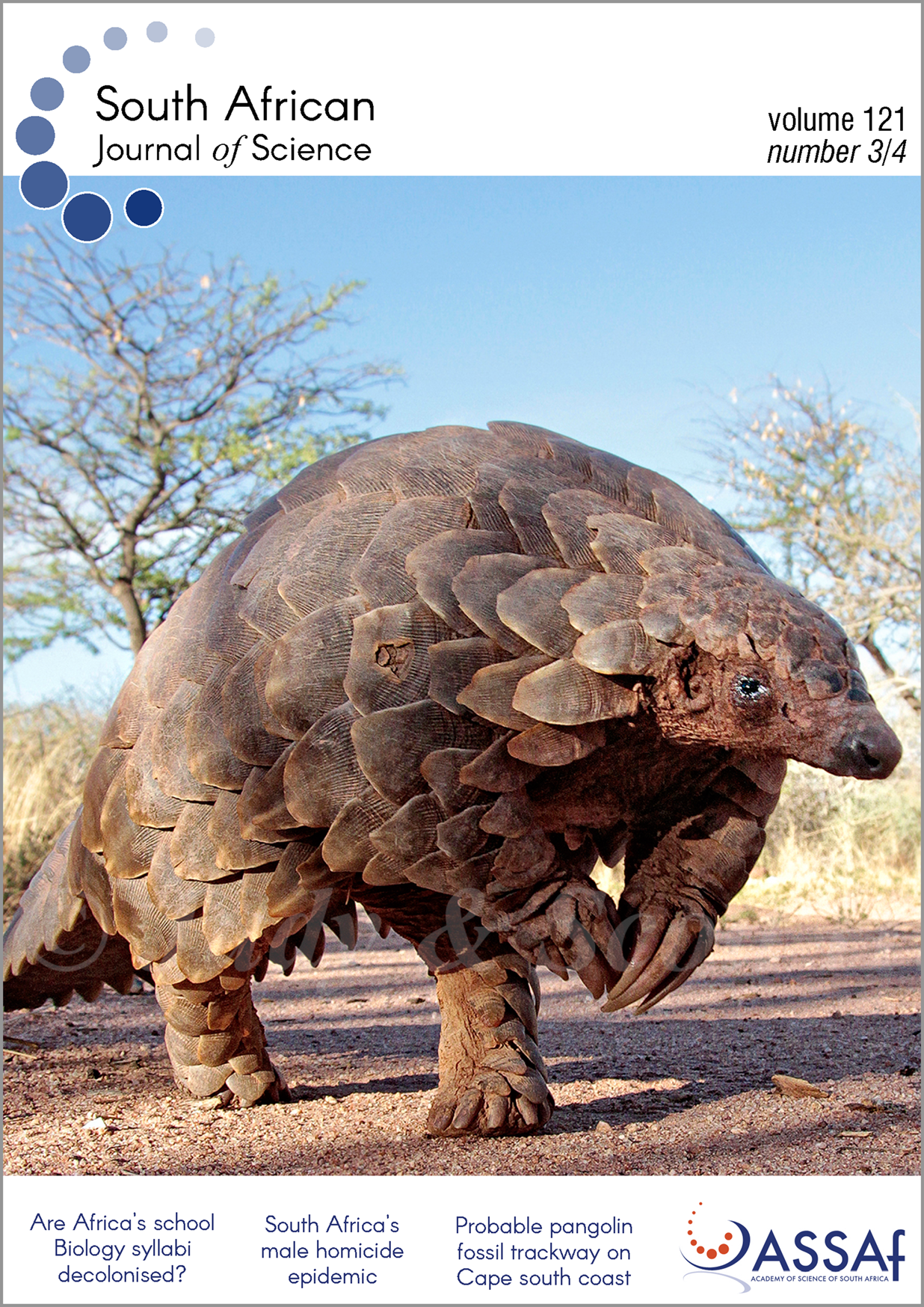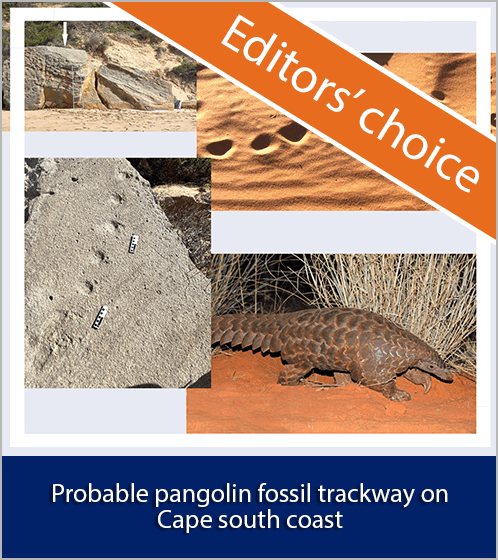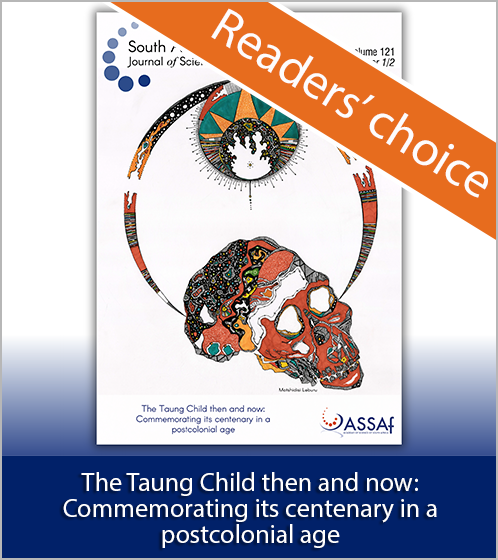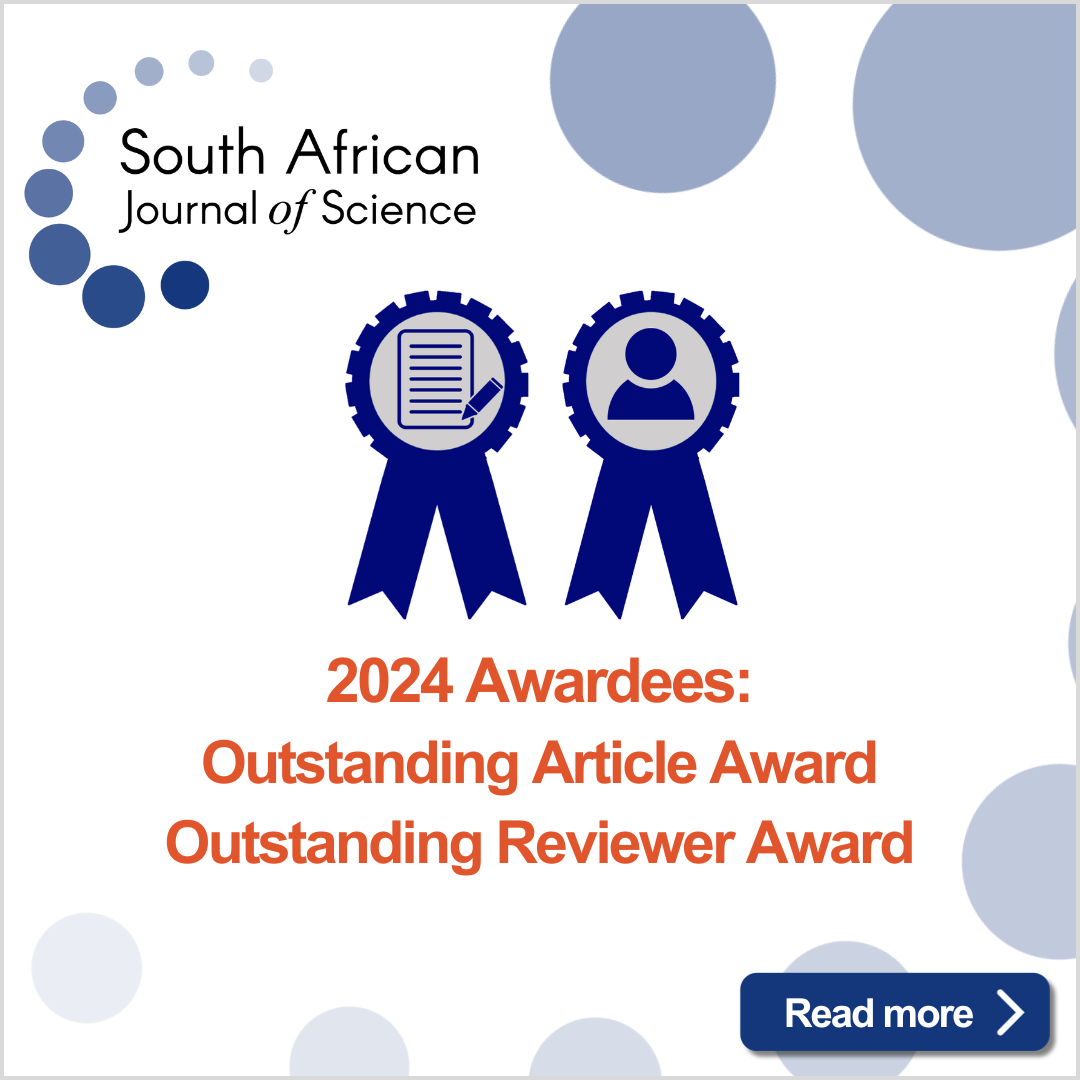A probable Pleistocene pangolin (Order: Pholidota) trackway from South Africa’s Cape south coast
DOI:
https://doi.org/10.17159/sajs.2025/18687Keywords:
pangolin, fossil tracks, aeolianites, Cape south coast, PleistoceneAbstract
A fossil trackway, attributed to a probable pangolin trackmaker, has been identified on a Pleistocene aeolianite surface of the Waenhuiskrans Formation in the Bosbokfontein Private Nature Reserve on South Africa’s Cape south coast. The trackway consists of eight tracks and two probable tail traces. This appears to be the first description of a pangolin trackway in the global fossil record. The trackway was probably registered during Marine Isotope Stage 6 or 5. Trackway assessment and interpretation involved the integration of indigenous African and Western-based ichnological approaches, leading to a reasonably confident conclusion on the probable trackmaker’s identity. Alternative trackmakers (felids, viverrids and canids) were considered, but excluded or regarded as less likely candidates. There are three Cenozoic body fossil records of pangolins from the southwestern Cape, which have been assigned to the giant pangolin (Smutsia gigantea). Only Temminck’s pangolin (Smutsia temminckii) currently occurs in southern Africa. All eight extant pangolin species are considered to be threatened with extinction according to the IUCN Red List of Threatened Species.
Significance:
- A Pleistocene probable pangolin trackway has been identified east of Still Bay, Western Cape Province, South Africa.
- The identification involved integrating indigenous African and Western-based ichnological approaches.
- This appears to be the first known fossilised pangolin trackway.
- The trackway consists of eight tracks and two probable tail traces.
- This discovery could draw attention to the plight of pangolins.
Downloads
Published
Issue
Section
License

All articles are published under a Creative Commons Attribution 4.0 International Licence
Copyright is retained by the authors. Readers are welcome to reproduce, share and adapt the content without permission provided the source is attributed.
Disclaimer: The publisher and editors accept no responsibility for statements made by the authors
How to Cite
- Abstract 307
- PDF 300
- EPUB 65
- XML 68
- Peer review history 177












.png)